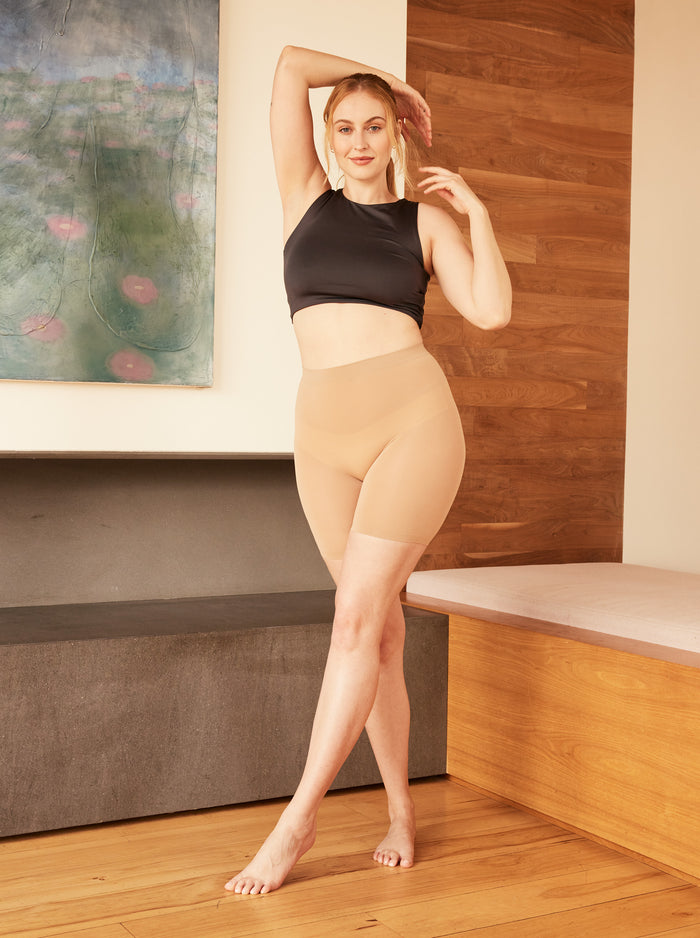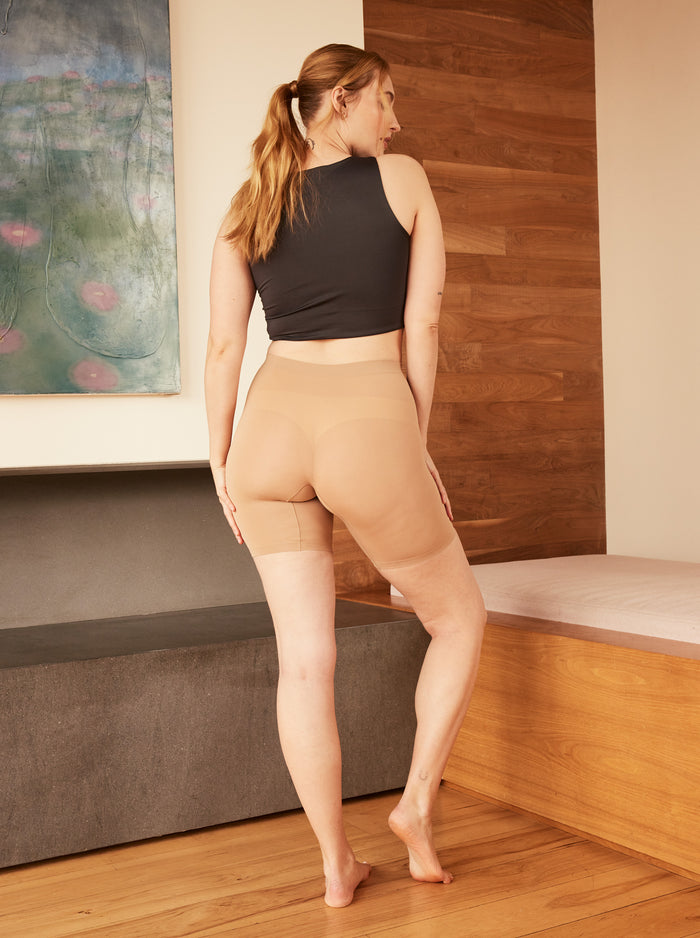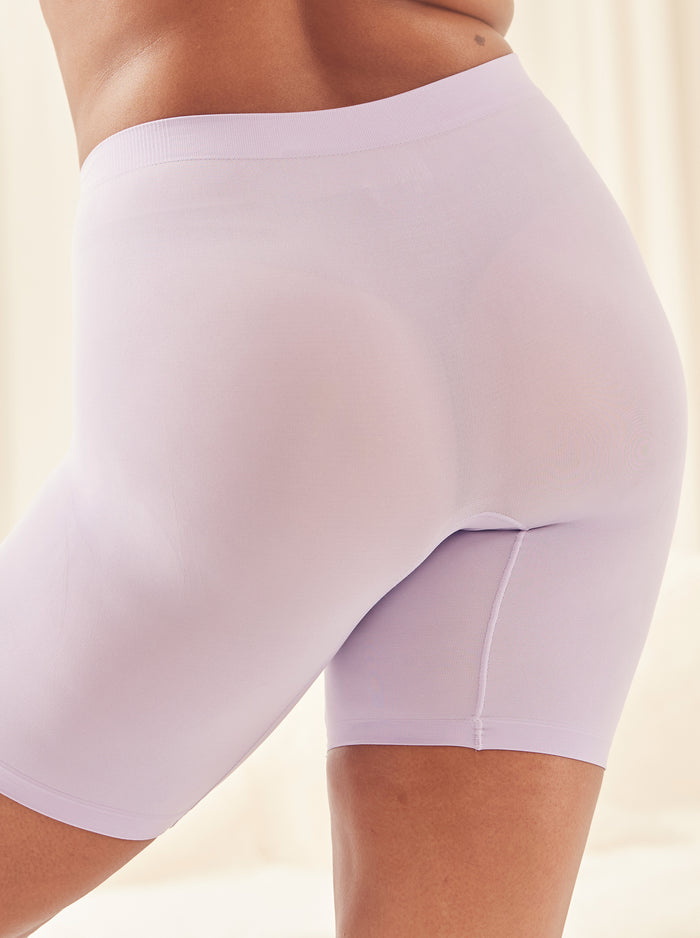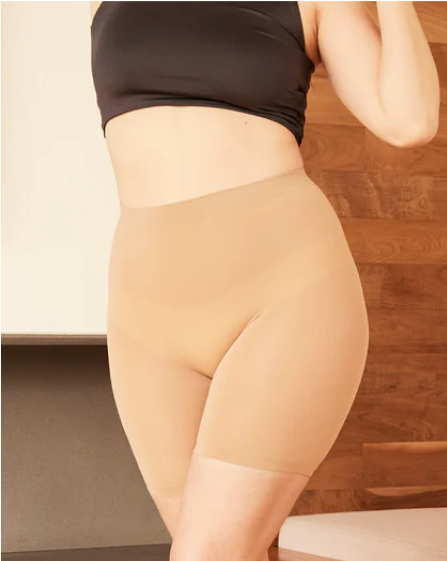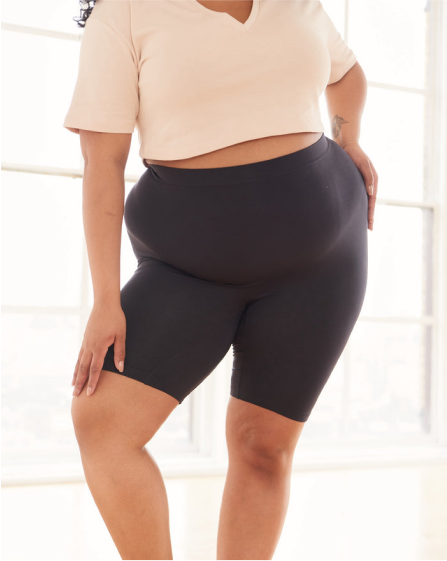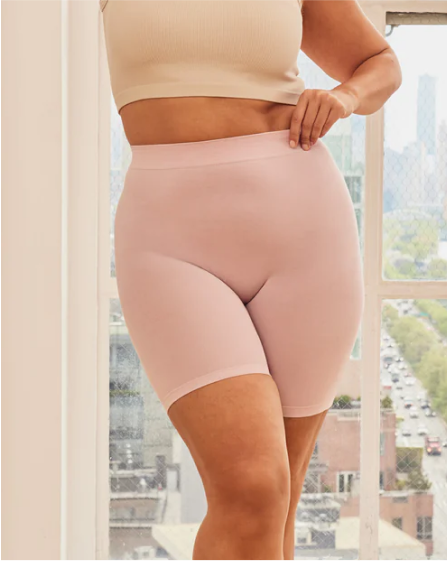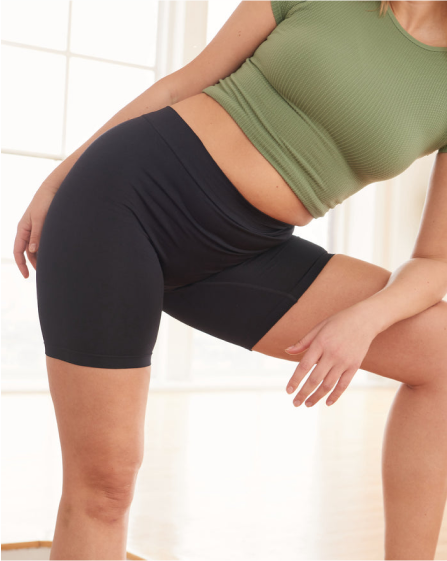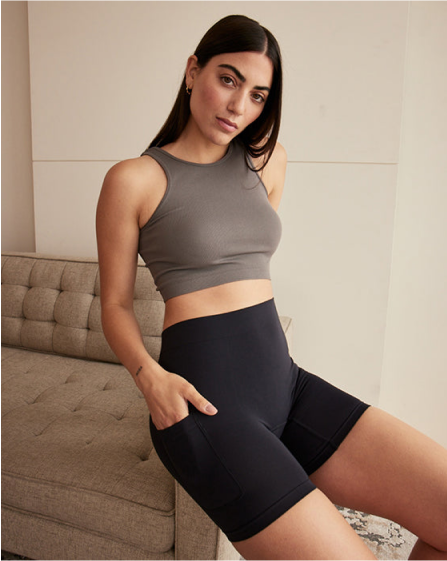It happens to all of us — sometimes you’re wearing a pair of tight pants and you look down and notice that you’re sporting a classic case of camel toe. Your crotch and the fabric of your bottoms have become intertwined and now you’re revealing a little more of yourself than you might have intended (and if it’s intended, more power to you). Camel toe is nothing to be ashamed of; it’s a common occurrence that almost every woman has experienced at some point. Aesthetics aside, camel toes can be uncomfortable and irritating, so if you want to avoid them, we have some tips. Here's everything you’ve ever wanted to know about camel toe. While it’s often treated as a punchline or a fashion faux pas, camel toe is just a result of how our bodies interact with the clothes we wear. Whether it's leggings, bike shorts, or even swimsuits, the possibility of labia visibility due to tight fabric is something we’ve all come across. And despite years of it being mocked in pop culture, more people are starting to question why we feel the need to hide or be embarrassed by it in the first place. After all, it’s not “unprofessional” or “unladylike” — it’s just anatomy meeting spandex.
What Is a Camel Toe?
Camel toe is when a woman’s outer labia are visible through tight-fitting clothing. The slang term was popularized in the early 2000s and, as you can guess, references a visual likeness in appearance to the two toes of a camel's hoof. In a world that has seemingly endless slew of critical expressions to describe women’s anatomy, camel toe had a derogatory connotation, though society seems to have softened its views on it slightly. While gym pants and leggings weren’t considered pants a decade or so ago, it’s very normal to see people spending their day in athleisure today. Which brings us to our next point… Visibility of the vulva in form-fitting clothes is simply a byproduct of tight materials molding to natural curves. Think about it: we don’t shame visible panty lines or bra straps nearly as much as we used to — so why does camel toe still get singled out? Our bodies aren’t one-size-fits-all, and neither are our clothes. Camel toe is more likely when garments lack gussets or have poorly placed seams that cut right across the crotch. It’s not just about the tightness; it's also about fabric behavior and garment design.
What Causes Camel Toe?
Tight stretchy bottoms, like the aforementioned gym and yoga pants, are the most likely suspects when it comes to camel toe. Their snug fit and middle seam, especially if they’re high waisted, really highlight the pubic area. We sometimes pull up our gym pants in an effort to accentuate the waist to the point where we’re displaying more of our crotch than we may have intended. This is especially true in the summer months where we’re just rocking gym pants and a top, with no sweater, cardigan or coat to cover up. Material composition matters, too. Synthetic fabrics like polyester and nylon, common in workout wear, tend to cling more than cotton blends. Pair that with the compressive nature of shapewear-inspired leggings, and it’s a recipe for camel toe. A rise that’s too short or poorly aligned seams can ride up, increasing friction and drawing the fabric in between the labia. Some modern brands now design leggings with “camel toe prevention” in mind, featuring seamless crotches or triangular gussets — but even these aren’t foolproof. While we’re deeming athletic wear as the most likely to create camel toes in the population, other pants aren’t safe either — not even baggy ones. Breezy linen pants seem like they wouldn’t lead to a camel toe, but the fit of something baggy can end up being unexpectedly tighter in your nether regions with movement and heat. Even denim isn’t a safe bet, especially when they’re made of a thinner material and feature a zipper or side closure. Yes, you can get a camel toe in jeans — especially skinny jeans or jeggings that have stretch built in. Add a low rise to the equation and you’ve got fabric fighting to find the path of least resistance, which is often smack dab down the middle. The issue isn’t always how tight something is, but rather how it moves with you throughout the day. Sitting, walking, bending — all of it can shift the fabric and cause it to settle in the groin area.
Camel Toe Misconceptions
The camel toe phenomenon doesn’t discriminate when it comes to body type — anyone can experience it. Sometimes the conversation about this wardrobe issue can feel like another form of fat shaming, but it has nothing to do with weight, nor is it indicative of having a large vulva. Just like thigh chafing, camel toes can happen to anyone in any type of body. There are products on the market that specifically cater to covering up camel toes, but we think that’s just another way to sell something to women by making them feel unnecessarily insecure about their bodies. We don’t ever make men feel insecure about the (far more noticeable) bulge in their pants. In fact we celebrate it — grey sweatpants, anyone? Let’s also put an end to the myth that only “ill-fitting” clothing causes camel toe. Sometimes the fit is perfect — the material is just clingy. Some women even choose to go without underwear under leggings, which can increase the chance of fabric outlining their anatomy. That’s not a wardrobe malfunction — that’s a personal preference. If we’re championing body confidence and authenticity, we shouldn’t be shaming the presence of a little extra definition down there.
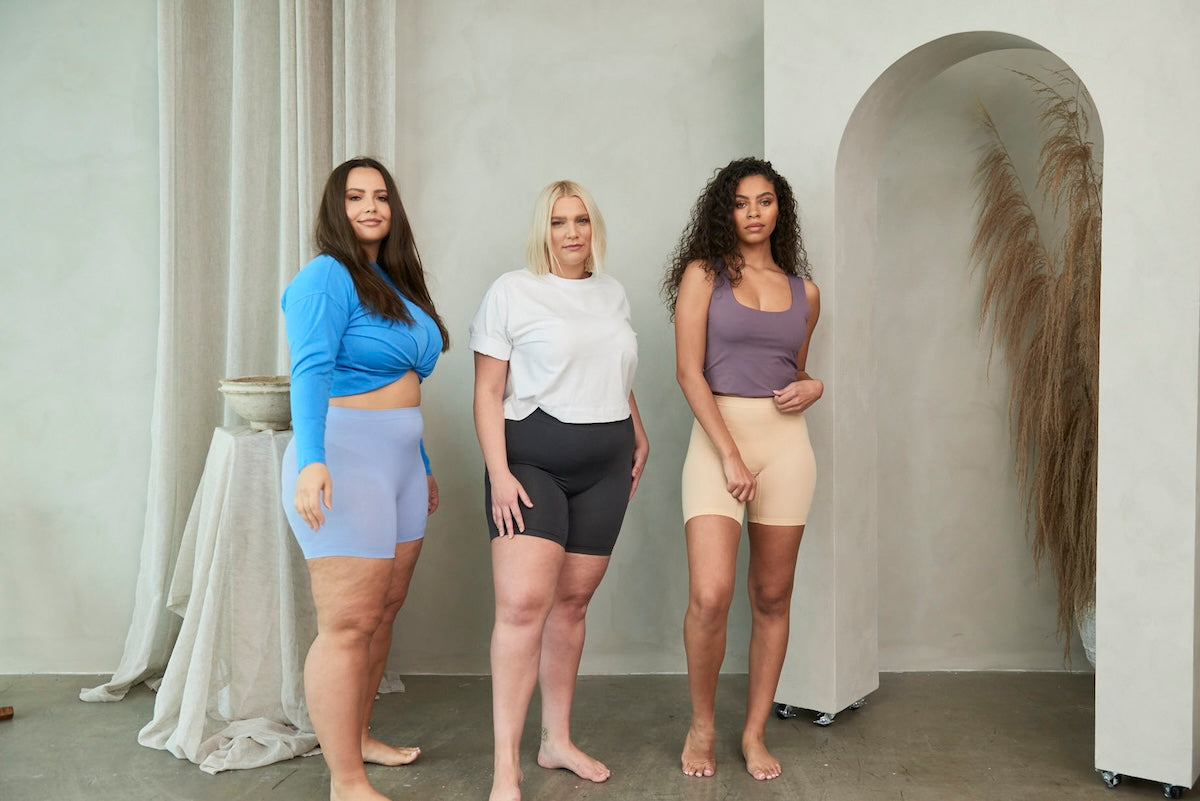
How to Prevent Camel Toe
Societal stigma aside, camel toes can also be uncomfortable by causing groin chafing. Groin chafing happens when there’s repetitive friction between skin surfaces in the groin area, which often happens in combination with exercise, wearing tight clothing or simply when you have more skin surface area. Those high-waisted, synthetic athletic pants combined with sweating a lot can do a number on your pubic area. Groin chafing can also happen in seated sports like biking or horseback riding. You may want to add an extra protective and moisture-wicking layer to help prevent camel toe and absorb excess sweat. Our Cooling shorts are super thin yet high-performance. The extra layer helps prevent sweaty butt and minimize the occurrence of camel toe by adding an additional lightweight layer between your leggings and your skin. They also pair well underneath a pair of looser athletic shorts, like a stealth sweat-absorbing layer to make you feel more comfortable on a hot day. The right fit and materials are the key to avoiding camel toe and keeping your vulva happy and not on display — unless you want that, which we think is the ultimate power move!
Another easy solution? Look for leggings that have a gusseted crotch — that diamond-shaped piece of fabric sewn in where the seams would otherwise converge. It distributes pressure more evenly and helps eliminate the risk of fabric riding up. Underwear choice also plays a role. Seamless thongs or moisture-wicking briefs can serve as a subtle barrier while preventing sweat and friction buildup. And if you’re dealing with repetitive camel toe in certain outfits, a camel toe guard or insert (yes, they exist!) can provide discreet coverage and peace of mind.
Camel toes are nothing to be ashamed of, we all get them. However, if you prefer to not reveal yourself in that way and want to avoid down-there discomfort, be mindful of what pants and fabrics you choose. Or CTC (cover the camel) with a thin base layer to prevent feeling super-hot and keep your bits under wraps. At the end of the day, wearing leggings or yoga pants should be about feeling good — not worrying if someone’s going to side-eye your crotch. Camel toe isn’t a moral failing. It’s a fabric-meets-body moment that happens to even the most fashion-conscious among us. Whether you choose to flaunt it, fix it, or completely ignore it, the power is (literally) in your pants.

